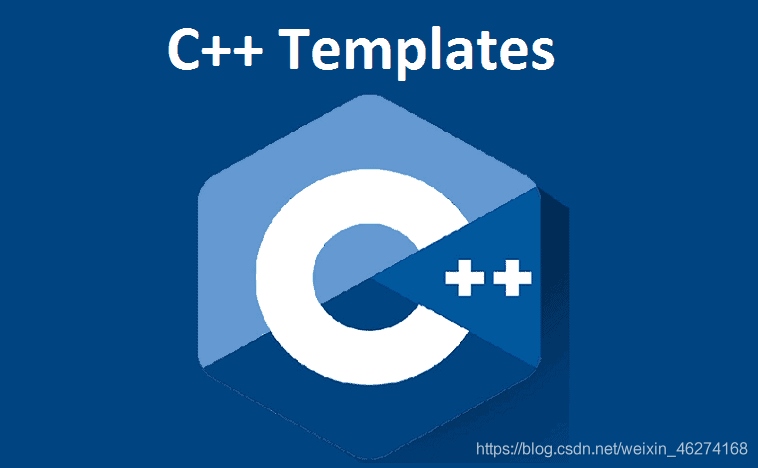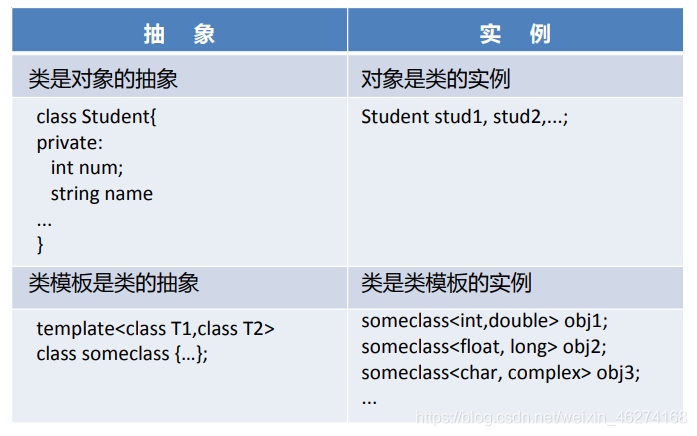C++模板
我是小白呀 人气:0概述
模板可以帮助我们提高代码的可用性, 可以帮助我们减少开发的代码量和工作量.

函数模板
函数模板 (Function Template) 是一个对函数功能框架的描述. 在具体执行时, 我们可以根据传递的实际参数决定其功能. 例如:
int max(int a, int b, int c){
a = a > b ? a:b;
a = a > c ? a:c;
return a;
}
long max(long a, long b, long c){
a = a > b ? a:b;
a = a > c ? a:c;
return a;
}
double max(double a, double b, double c){
a = a > b ? a:b;
a = a > c ? a:c;
return a;
}
写成函数模板的形式:
template<typename T>
T max(T a, T b, T c){
a = a > b ? a:b;
a = a > c ? a:c;
return a;
}
类模板
类模板 (Class Template) 是创建泛型类或函数的蓝图或公式.
#ifndef PROJECT2_COMPARE_H
#define PROJECT2_COMPARE_H
template <class numtype> // 虚拟类型名为numtype
class Compare {
private:
numtype x, y;
public:
Compare(numtype a, numtype b){x=a; y=b;}
numtype max() {return (x>y)?x:y;};
numtype min() {return (x < y)?x:y;};
};
mian:
int main() {
Compare<int> compare1(3,7);
cout << compare1.max() << ", " << compare1.min() << endl;
Compare<double> compare2(2.88, 1.88);
cout << compare2.max() << ", " << compare2.min() << endl;
Compare<char> compare3('a', 'A');
cout << compare3.max() << ", " << compare3.min() << endl;
return 0;
}
输出结果:
7, 3
2.88, 1.88
a, A
模板类外定义成员函数
如果我们需要在模板类外定义成员函数, 我们需要在每个函数都使用类模板. 格式:
template<class 虚拟类型参数>
函数类型 类模板名<虚拟类型参数>::成员函数名(函数形参表列) {}
类模板:
#ifndef PROJECT2_COMPARE_H
#define PROJECT2_COMPARE_H
template <class numtype> // 虚拟类型名为numtype
class Compare {
private:
numtype x, y;
public:
Compare(numtype a, numtype b);
numtype max();
numtype min();
};
template<class numtype>
Compare<numtype>::Compare(numtype a,numtype b) {
x=a;
y=b;
}
template<class numtype>
numtype Compare<numtype>::max( ) {
return (x>y)?x:y;
}
template<class numtype>
numtype Compare<numtype>::min( ) {
return (x>y)?x:y;
}
#endif //PROJECT2_COMPARE_H
类库模板
类库模板 (Standard Template Library). 例如:
#include <vector>
#include <iostream>
using namespace std;
int main() {
int i = 0;
vector<int> v;
for (int i = 0; i < 10; ++i) {
v.push_back(i); // 把元素一个一个存入到vector中
}
for (int j = 0; j < v.size(); ++j) {
cout << v[j] << " "; // 把每个元素显示出来
}
return 0;
}
输出结果:
0 1 2 3 4 5 6 7 8 9
抽象和实例

加载全部内容